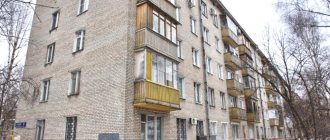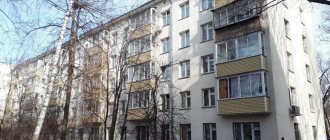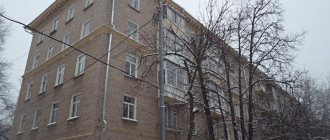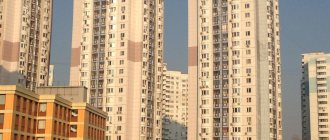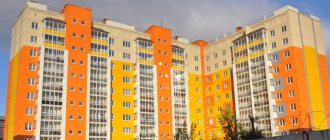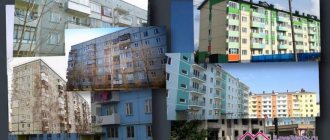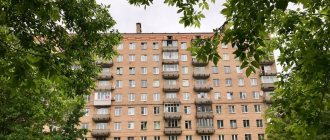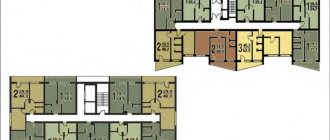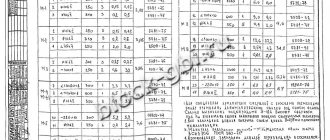Natalya Orlova Real estate June 23, 2016
1LG-606. It's time for the townspeople to remember this code. This is a series of residential buildings from the Soviet period, the condition of which is now the focus of the closest attention of officials and management companies. The time has come, and the concrete fences of the balconies of these houses began to collapse. And this is no longer a housing and communal history, but a history of the safety of people passing and passing under the walls of 1LG-606.
PHOTO OF THE AUTHOR
The condition of balcony railings of panel houses in the city has been monitored since last year. Then in July, on Oktyabrskaya Street in Kolpino, part of a concrete fence collapsed on the head of a pregnant woman. After this, working groups were created, and inspections were carried out in the regions by the housing inspectorate (GZHI) and the housing committee. They conferred and reported on the results of periodic raids.
On May 10 of this year, another such report was held at the Housing Committee. And the next day - May 11 - on Hasek Street in Kupchin, another fragment from the balcony fell on a man’s head.
It was then that mobilization was announced in St. Petersburg. Houses 1LG-606 (more than 400 units) were taken under special control. The facades in the Vyborg, Kalinin and Nevsky districts received the greatest number of comments. The Housing Committee sent a letter to the districts, recommending that everything possible be done to ensure safety.
What can you do quickly? There is only one thing - dismantling. By mid-June, according to reports from the districts, the fences of more than two thousand balconies, whose condition was recognized as emergency, had already been dismantled - partially or completely. So now many balconies are separated from the light of God only by metal railings and red and white emergency ribbons.
According to the head of the technical department of the housing committee, Andrei Dzhalalov, management companies are recommended to solve the problem in two ways. Where dismantling the fencing slabs is not urgently necessary, but there is still a risk of them falling, weld horizontal metal strips on the outside of the balcony as an additional guarantee. Well, if dismantling has already been carried out, take into account the experience of ZhKS-1 of the Kalininsky district, where instead of concrete slabs, vertical metal rods are welded to the balcony railings. Like on the good old balcony of the Khrushchev building.
However, these recommendations are not affordable for everyone. The management company must carry out such work at the expense of fees for current repairs. There is no other money.
– The Housing Committee has prepared a draft resolution of the city government on the use of funds allocated for emergency repairs. The project is currently undergoing approval,” noted Andrey Dzhalalov. “However, most likely, the city prosecutor’s office will oppose it.” In general, there really is no legal basis for spending the budget in this situation. Since we are talking about common property, the burden of maintaining which must be borne by the owners. But under these circumstances, it seems impossible to do without budgetary funds.
It is worth adding that under these circumstances, officials have almost ceased to be interested in the question, which has not been resolved by legislation, whose property are the balconies: private or common? There have never been any problems with the balcony base-floor: the load-bearing slab is common property. Fencing is a different matter. It is not an element, as stated in the Housing Code, “serving more than one room in a residential building.” Therefore, private property. On the other hand, this is part of the facade, which is certainly not private property.
“The management company is responsible for the façade,” says Jalalov. – And if any shortcomings are discovered, the State Housing Inspectorate will punish her, and not the owner of the apartment with an emergency balcony fence. And the owner can be punished only for violating the rules for using the balcony: you cannot litter, re-equip, rebuild, and so on. True, the owner of the housing estate cannot be punished. This is the function of the district administration. Its officials have the right to draw up an appropriate protocol, submit it to the district administrative commission, which will summon the violator and fine... But it seems that no one wants to do this.
From the point of view of the current housing legislation, the problem with the accident rate of balconies should be solved as follows.
First, the management company (MC), which has noticed the presence of emergency elements, informs the active owners about this. They initiate a general meeting at which citizens instruct their management company to begin preparations for repairs and... agree to pay for this preparation.
The management company carries out an examination of the balconies, receives an architectural task from the urban planning committee for designing repair work (if the house is recognized as a monument, then the architectural and restoration task is issued by KGIOP), and draws up an estimate.
A meeting is convened again to adopt this estimate and resolve the issue of financing: either spend the money already collected for current repairs, or introduce a targeted payment for everyone. At the same time, they decide who to hire as technical supervisor.
Two-thirds vote in favor, and the management company begins to look for a contractor. Well, or herself, if the required specialists are on her staff...
Difficult? Not that word! It is even difficult to imagine such a development of events. Nevertheless, this is the only way and no other way. Strictly speaking, according to the letter of the law, today even the owner of an apartment with a damaged balcony, who has the means and a head on his shoulders, cannot independently, without demanding anything from anyone, carry out repairs. He must not only inform the management company about his plans, but also act as if he himself is the management company: in the sense of the project, approval, technology and other things.
Somehow it always turns out that the solution to most problems in housing and communal services is associated with the need to overcome obstacles created by legislation. And now: officials will be able to find a loophole in the law - the balconies at 1LG-606 will be put in order at the expense of the budget, but they won’t be able to... - they will still have to find it.
#housing and communal services #balcony #collapse
The material was published in the newspaper “St. Petersburg Vedomosti” No. 111 (5728) dated June 23, 2016.
Share on VKontakte Facebook
Cool
What are the 606 series buildings?
It is with the 606 series that the history of modern panel houses is believed to begin. According to their characteristics, they are recognized as the best among “panels”. The 606 is distinguished from previous series by good thermal insulation, better sound insulation, as well as more comfortable layouts, but we will talk about them later.
House 606 series on Zamshina street, 25 |
Author - Monoklon (wikimedia.org) There are about 6 apartments on a typical floor. Residential floors have vestibules for 2-4 apartments. Starting from the 3rd-4th floor, apartments (with the exception of one-room apartments) are equipped with balconies. Height – 9 floors. The ceiling height in the apartments of houses of the 606 series is 2.7 m. The houses were made mainly in light gray colors.
Leningradka 111-142
Series 111-142 – variation of the 108th. It was designed only in a five-story version for development in regions with harsh climatic conditions.
In 1975, they began to build houses with 88 apartments (6 sections) and 114 apartments (8 sections) in the Krasnoyarsk Territory, Khakassia, and Kemerovo Region.
Then sections from the Nizhny Novgorod Design Institute appeared for 20 (with 1-, 2-, and 3-room) and 10 apartments (with 3 and 4-room).
Five-story building series 111-142
Houses with a flat roof were built using frame-panel technology from three-layer expanded clay concrete panels mounted on reinforced concrete columns 200*300 mm (320 cm pitch). Flat ceilings 100 mm thick rest on crossbars with a rectangular flange. Ceiling height 2.55 m.
The frame elements protrude beyond the plane of the walls, which some consider to be a disadvantage. But provided that the columns and crossbars are intact, any walls, even external ones, can be redesigned.
The protruding parts of the frame can be beautifully played out in the interior:
Layouts
Each apartment has a loggia or balcony (options for the internal layout of the loggia are presented at the link). The kitchen area is 7-8 m2. The bathrooms are separate, but small. There are garbage chutes at the entrances.
The house has three types of one-room apartments with an area of up to 36 m2. They are rectangular with windows on one side. The end apartments on the first floor have a loggia and windows on two sides.
T-shirt with 1st room
Two-room apartments start from the second floor. Area 45-49 m2. The apartments above the arch have 52 square meters.
Option for planning a two-room apartment in the house series 111-142
3-room apartments of 60 and 68 square meters with a kitchen of 12 m2.
Three-room vest
The area of the four-room apartment is 68 m2. The rooms there are smaller than in three rubles. One of them is passable.
Such apartments are provided only on the first floors.
4-room apartment with a walk-through room
These houses were built mainly in regions with low winter temperatures.
The history of the appearance of houses of the 606 series
The houses of this series were designed in 1965, the authors were the architects of workshop No. 4 of LenNIIproekt. Buildings of the 606 series belong to the “Brezhnevok” category and, among their “brothers” of the era, are considered the best residential buildings.
The 606 series was built mainly for housing cooperatives. It is believed that it was thanks to this that the houses turned out to be more comfortable and cozy than their predecessors. Otherwise, the 606 series risked continuing the Khrushchev dynasty and gaining similar fame.
The buildings in this series were built over 8 years, from 1966 to 1974. During its implementation, the series was subject to modifications several times, including, for example, the abandonment of vents.
Early version of the house 606 series with windows, Frunzensky district
Subsequently, the original 606 series was completely redesigned. The result was the 1LG-606M series, which supplanted and replaced the 606 series.
Series 1LG
The houses in this series are panel.
1LG 502
Brezhnevki 1LG 502 were built from 1963 to 1972. These are five-story buildings with two or more entrances and a ceiling height of 250 cm.
Balconies and loggias are not available in all apartments. Houses without a garbage disposal with four apartments per floor.
Most apartments in the 502 series do not have balconies
House structure:
- The external walls are made of expanded clay concrete panels 303 mm thick in three layers with ceramic mosaic cladding. Internal – single-layer 140 mm.
- The ceilings are solid, 120 mm thick. The covering of the last floor is ribbed.
- Flights of stairs on the central stringer.
- The bathrooms are made from solid reinforced concrete cabins, separate and spacious.
Layout of house section 1LG 502
1LG 504D-MK
In 1975, the 502 series from Lenproekt was replaced by another standard version of panel apartment buildings - 1LG-504D-MK. They were built before 1989. These were two to eight entrance 12-story buildings. Some have two non-residential floors below.
12-storey building 504 series
All apartments, starting from the 2nd floor, have balconies. The height of the premises increased to 270 cm.
Standard layout of sections and apartments:
1LG 600
Houses of the six hundredth series were built in the Leningrad, Tyumen, Pskov and Chelyabinsk regions for 22 years, from 1967 to 1989. They featured curved brick inserts designed to dampen gusts of wind in coastal areas. Because of this, they are called "ships".
House 600 series
Houses with Leningrad layouts are the most in demand on the secondary housing market.
They were built in old neighborhoods with good infrastructure. They have an elevator and a garbage chute.
Disadvantages: poor sound insulation and small six-meter kitchens in the first houses. Later, this omission was improved and the kitchen area was increased.
In the northern regions, many hotel-type houses of the 1LG-600A/UR-25 modification were built for small-family hostels. These are 108-apartment nine-story buildings that have little in common with the main series.
Houses with three sections connected perpendicularly are called “three-leaf houses.”
In addition to them there were several modifications:
- 9-storey buildings with 54, 180, 252, 322 apartments;
- 12-storey buildings with 54 and 72 apartments;
- 15-storey buildings with 90 apartments.
Houses 606 series in St. Petersburg
Buildings of this series were built in residential areas of the city. The construction of such houses began in the Kalininsky and Krasnogvardeysky districts. Subsequently, the geography expanded, and houses of the best series of panel houses appeared in the Kupchino district, in the so-called “Vesely Poselok” (area of the metro stations “Pr. Bolshevikov” and “Ul. Dybenko”), in the north of the city - near the metro station “Ozerki” and “ Civil Avenue”, as well as in the south – in the Kupchino area.
In the Moskovsky district, houses of the 606 series can also be found, but there are very few of them there.
Links
| Construction | 1966 — 1995 |
| Usage | House |
| Height | |
| Roof | about 30 meters |
| Top floor | about 27 meters |
| Technical specifications | |
| Number of floors | 9, 10, 14 |
| Number of elevators | 1, 2 (in 14-story modification) |
| Architect | LenNIIproekt |
| Owner | Lua error in Module:Wikidata on line 170: attempt to index field "wikibase" (a nil value). |
| Doric order | This is a preliminary article about architecture. |
| Saint Petersburg | This is a draft article about St. Petersburg. You can help the project by adding to it. |
Features of the 606 series layouts
The apartment layout of the houses in this series is familiar: the apartments have from 1 to 3 living rooms, and all living spaces are isolated from each other. The same applies to the bathrooms - they are separate.
“One-room apartments” in this series have an area of 36 m2 and, as we said earlier, are completely devoid of balconies. The sizes of two-room apartments range from 51-52 m2, and the layouts of 3-room apartments of the 606 series have a footage of 70-72 m2. The kitchen area starts from 8 m2.
In houses of the 606 series, housing is more expensive than in similar panel buildings of other series.
Section materials
06 December, 12:45
St. Petersburg residents complained about creepy giant icicles
November 29, 09:31
On Korablestroiteley Street, a man fell from a balcony onto a passerby
November 26, 11:42
Smolny limited the growth of tariffs for housing and communal services and major repairs
November 23, 09:45
St. Petersburg firefighters spent the entire night extinguishing the fire in the house on Rosenshteina
November 16, 13:32
